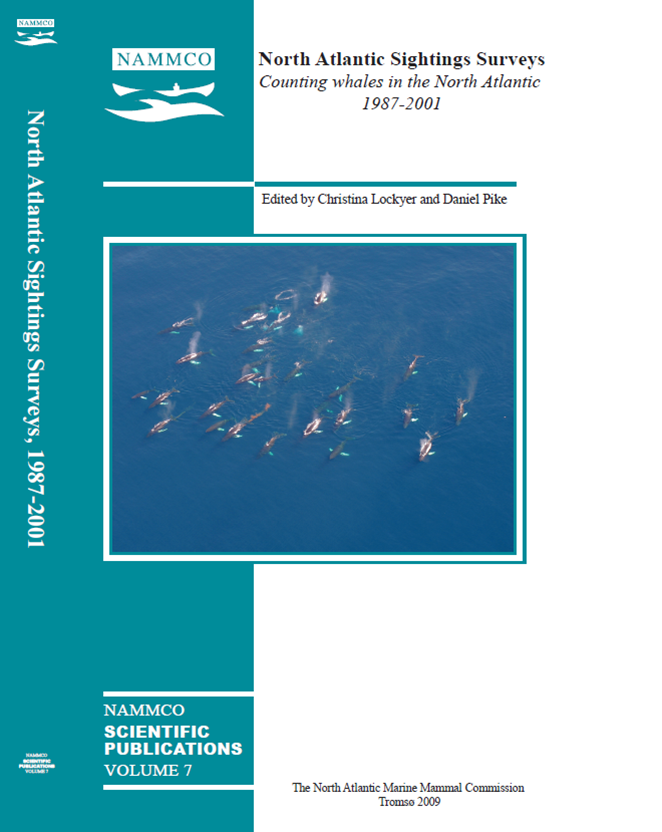Distribution and abundance of fin whales (Balaenoptera physalus) in the Northeast and Central Atlantic as inferred from the North Atlantic Sightings Surveys 1987-2001
DOI:
https://doi.org/10.7557/3.2705Keywords:
distribution, abundance, fin whales, Balaenoptera physalus, North Atlantic, surveysAbstract
North Atlantic Sightings Surveys (NASS) is a series of large scale international cetacean line transect surveys, conducted in 1987, 1989, 1995 and 2001, that covered a large part of the central and eastern North Atlantic. Target species were fin (Balaenoptera physalus), common minke (B. acutorostrata), pilot (Globicephala melas) and sei (B. borealis) whales. Here we present new estimates of abundance for fin whales from the 2 most recent surveys and analysis of trends throughout the survey period. Fin whales were found in highest densities in the Irminger Sea between Iceland and Greenland. Abundance of fin whales in the survey area of the Icelandic and Faroese vessels (Central North Atlantic) was estimated as 19,672 (95% C.I. 12,083-28,986) animals in 1995 and 24,887 (95% C.I. 18,186-30,214) in 2001. The estimates are negatively biased because of whales diving during the passage of vessels, and whales being missed by observers, but these and other potential biases are likely small for this species. The abundance of fin whales increased significantly over the survey period. For all areas combined the estimated annual growth rate was 4%. An estimated annual increase of 10% in the area between Iceland and Greenland was responsible for most of this overall increase in numbers of fin whales in the area. Although high, the estimated rates of increase are not out of bounds of biological plausibility and can thus be viewed as recovery of a depleted population. However, the apparent pattern of population growth and the whaling history in the area indicate that fin whales made a significant recovery during the first half of the 20th century and that the recent observed high growth rates cannot be explained solely by recovery after overexploitation.Downloads
Published
2013-10-22
How to Cite
Víkingsson, G. A., Pike, D. G., Desportes, G., Øien, N., Gunnlaugsson, T., & Bloch, D. (2013). Distribution and abundance of fin whales (<i>Balaenoptera physalus</i>) in the Northeast and Central Atlantic as inferred from the North Atlantic Sightings Surveys 1987-2001. NAMMCO Scientific Publications, 7, 49–72. https://doi.org/10.7557/3.2705
Issue
Section
Articles





